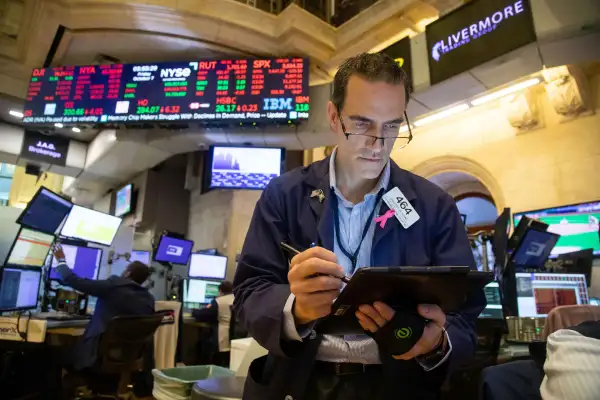When Will the Stock Market Hit Bottom? Don’t Worry About It
Money is not a client of any investment adviser featured on this page. The information provided on this page is for educational purposes only and is not intended as investment advice. Money does not offer advisory services.

Has the stock market finally hit a bottom? After falling into a bear market in June and plunging again after a summer rally, the S&P 500 index has ticked up around five percent over the last month.
That positive performance has some wondering whether stocks are finally on the upswing for good or if investors should brace for this being another temporary bear market rally. (That's always a possibility, especially given that the S&P 500 was down 0.7% during trading on Wednesday afternoon.)
The “bottom” of the market refers to its trough, or lowest point. It’s the turning point when stocks stop falling and start rising again.
A bottom “will always come with a timeframe in mind,” Gargi Chaudhuri, head of BlackRock's iShares investment strategy in the Americas, tells Money.
Right now, many investors are concerned with the period that began when the stock market started falling from its all-time high around the beginning of the year.
Has the stock market bottomed?
The S&P 500 is currently down around 20% for the year and, for the most part, experts agree that stocks have further to fall.
Last week, Morgan Stanley chief U.S. equity strategist Mike Wilson told Bloomberg TV that he believes the S&P 500 could bottom out between 3,000 and 3,200 points (on Tuesday, the index closed at 3,859 points). Wilson said he thinks the market will “probably” get there sometime within this quarter or the next quarter.
Analysts at UBS Global Wealth Management wrote last week that the conditions necessary for the stock market to hit its bottom — economic conditions that will prompt the Federal Reserve to cut interest rates rather than raise them, and stock prices that fully reflect the slowdown — haven’t happened.
″I don’t think we’ve seen the bottom of the market yet,” JPMorgan President Daniel Pinto told CNBC this week, adding that he believes investors’ expectations of corporate earnings are still too high given current economic conditions.
Investors shouldn’t worry about the market bottom
While buying stocks at or near the bottom of the market can certainly lead to strong returns, that strategy shouldn’t be at the top of your priority list.
Searching for the bottom is another way to describe the strategy of buying the dip. It’s an attempt to time the market — something investors are famously bad at.
There’s no guarantee that the market won’t keep falling after you invest at what you think is the bottom. “You don’t actually have a crystal ball,” Chaudhuri says.
Financial advisors say the better strategy for people investing for the long-term is to develop a plan and stick to it. One strategy to consider is dollar-cost averaging, or investing a set amount of money in the market on a regular schedule. That method can spare you from worrying about trying to identify the right time to buy.
And remember: Small percentage drops over the course of a few weeks, months or even a year don’t matter nearly as much as the market’s performance over a few decades, Chaudhuri says.
“In the end, it’s about the amount of time you have spent in the market,” she adds. “It’s not really about timing the market.”
More from Money:
Is 'Buy the Dip' Dead? Investors Are Avoiding the Popular Strategy This Year
Does 'Buy the Dip' Actually Work? What Experts Think of the Internet's Favorite Investing Strategy
Goodbye, GameStop: Gen Z Investors Are Picking Their New Favorite Stocks


